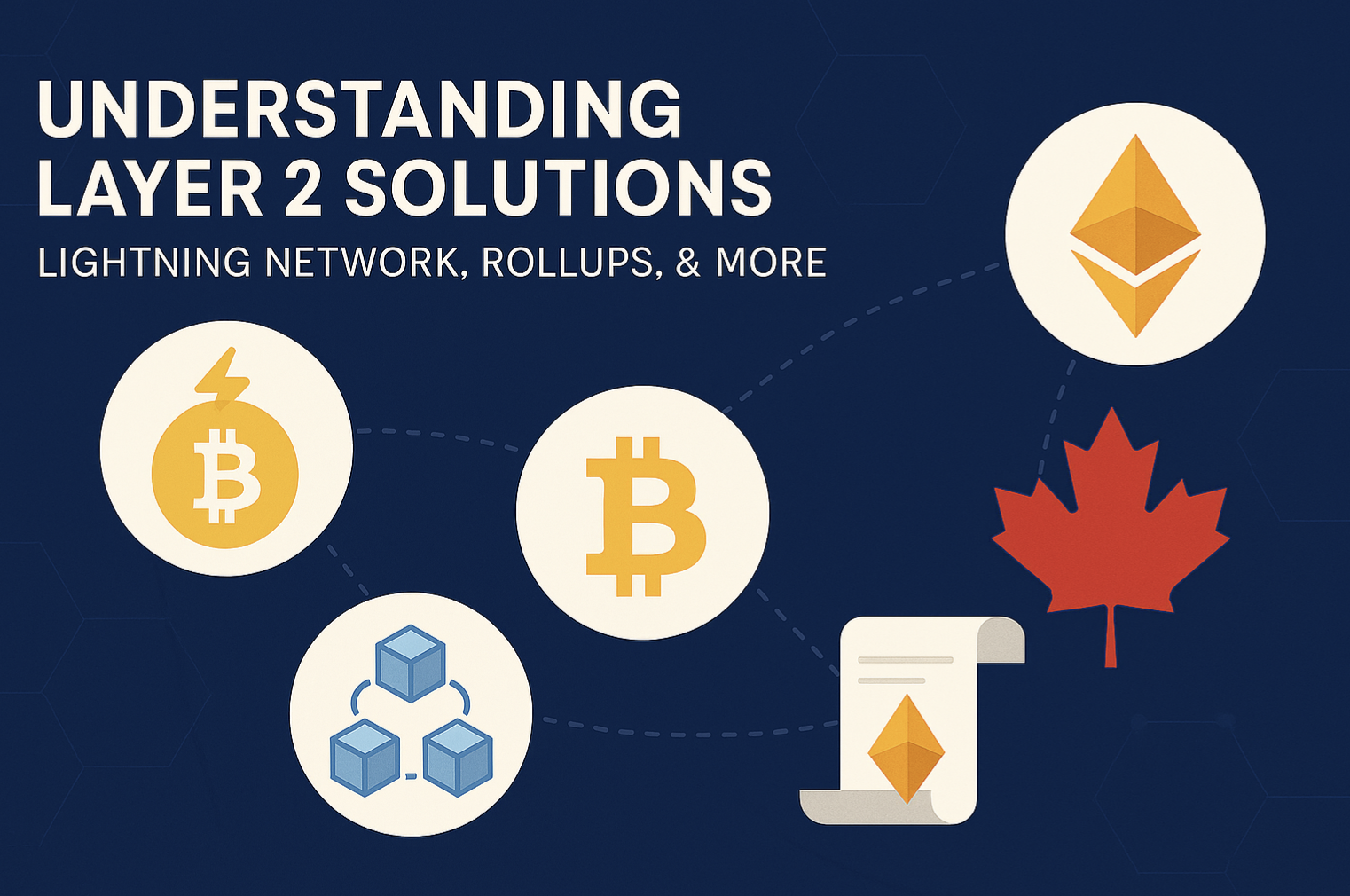Understanding Layer 2 Solutions: Lightning Network, Rollups, & More
As Bitcoin and Ethereum continue to gain mainstream attention, many Canadians looking to buy Bitcoin in Canada or sell crypto in Canada face a question that isn’t always visible on the surface: how does the blockchain handle massive transaction volume without slowing down or becoming too expensive?
The answer lies in Layer 2 solutions, an evolving category of technologies that improve blockchain performance by moving certain operations off the main chain—while still preserving the decentralization and security that define the blockchain space. If you're a developer, investor, or just someone curious about why transactions sometimes cost more than your large double-double, understanding Layer 2 is essential.
What Are Layer 1 and Layer 2 Blockchains?
A Layer 1 blockchain is the base protocol—think Bitcoin or Ethereum. It processes and finalizes all transactions on its own chain. But as traffic grows, these networks struggle to scale. Slow confirmation times and high transaction fees are symptoms of that congestion.
Layer 1 solutions attempt to fix this by upgrading the blockchain’s core functionality. Ethereum’s shift from proof-of-work to proof-of-stake in 2022—called The Merge—is a good example.
In contrast, Layer 2 solutions build on top of these Layer 1 blockchains. Instead of rewriting the original chain’s code, Layer 2 handles transactions off-chain and later settles them on the Layer 1. This allows the mainnet to stay secure and decentralized, while Layer 2 absorbs the bulk of the transaction load.
To make it relatable: Layer 1 is the highway. When it’s clogged, Layer 2 is the express lane floating above it.
Why Do Canadians Care About Layer 2?
For Canadian crypto users, buying and selling Bitcoin efficiently matters. If you’re using platforms like MyBTC.ca to fund your account via e-Transfer or sell your Bitcoin in Canada to keep your profits within the country, costly delays hurt your bottom line. Layer 2 solutions help reduce those costs, speed up settlement times, and open the door for microtransactions—useful if you’re sending $50 worth of BTC to a friend or co-worker.
More importantly, as calls grow to support the Canadian economy by buying Canadian crypto, using platforms like MyBTC.ca and transacting on Layer 2-enabled networks keeps more funds circulating within our borders.
Types of Layer 2 Scaling Solutions
1. The Lightning Network (Bitcoin)
One of the earliest and most recognizable Layer 2 projects is the Lightning Network, built for Bitcoin. It enables instant, low-fee transactions using a concept called state channels.
Here’s how it works: two parties open a payment channel and transact off-chain as often as they like. Only the final balance is recorded on the Bitcoin blockchain. This keeps the network unclogged and fees minimal.
This technology is especially valuable in Canada, where sending or receiving small crypto amounts for goods or services is increasingly common.
Learn more or sell your Bitcoin instantly in Canada using MyBTC.ca.
2. Rollups (Ethereum)
Rollups “roll up” or bundle hundreds of transactions into one and post them to the Ethereum mainnet. They come in two flavours:
- Optimistic Rollups (e.g., Arbitrum, Optimism): Assume all transactions are valid unless challenged.
- ZK-Rollups (e.g., zkSync, StarkNet): Use cryptographic proofs to verify correctness without revealing sensitive data.
Both drastically reduce gas fees and increase throughput. This is a big deal for Canadians using Ethereum-based DeFi apps, who would otherwise pay $5–$50 per transaction during periods of network congestion.
Platforms like Polygon also use rollup technology, offering compatibility with Ethereum at a fraction of the cost.
3. Sidechains
Sidechains run parallel to Layer 1 blockchains but operate independently. They’re connected via two-way bridges that allow token transfers back and forth. The downside? Since they use their own security mechanisms, they don’t inherit the mainnet’s decentralization.
Nevertheless, for Canadians who buy altcoins or explore DeFi, sidechains provide affordable, fast alternatives—ideal for experimental or high-volume usage.
4. Plasma, Validium, and Nested Chains
Plasma chains segment the Ethereum blockchain into smaller chains to process transactions in parallel. They use fraud proofs for validation.
Validiums are like zk-Rollups but store data off-chain, allowing for faster withdrawals.
Nested blockchains allow a parent chain to assign work to child chains, streamlining performance across the ecosystem.
Each of these plays a unique role in scaling crypto adoption—especially in countries like Canada, where blockchain integration into business, finance, and even government systems is gaining traction.
Layer 2 in Action: Real-World Applications
Across Canada, use cases are evolving quickly:
- Decentralized Finance (DeFi): Canadians are locking millions into DeFi protocols for lending, staking, and liquidity farming—often through Layer 2s like Arbitrum or Polygon.
- NFT Marketplaces: Platforms such as Immutable X enable gas-free NFT trading by using ZK-rollups.
- Micropayments & Gaming: Lightning Network enables new revenue models like tipping creators in BTC, a feature increasingly relevant for Canadian streamers and freelancers.
These developments help Canadians interact with crypto in practical, low-cost ways—and reinforce the importance of domestic platforms that make onboarding easier.
Why It Matters for Canadian Crypto Users
As Layer 2 technology advances, the Canadian crypto community stands to benefit in a few key ways:
- Lower Fees: Layer 2 cuts costs, making it more feasible to trade, earn, and spend crypto locally.
- Speed: Faster transactions reduce friction—whether you’re buying BTC with a credit card or other trusted payment methods like Interac e-Transfer to buy cryptocurrency.
- Economic Patriotism: Using Canadian services like MyBTC.ca to buy and sell crypto ensures your money stays in Canadian hands—supporting jobs, fintech innovation, and economic resilience.
The Layered Future of Blockchain
Layer 2 solutions are more than just technical upgrades. They represent the next phase of blockchain usability, helping Canadians and the global crypto community make the jump from experimentation to mass adoption.
So if you're a developer building on Ethereum or a retail investor looking to sell your crypto in Canada, understanding these scaling solutions is a necessity. They impact everything from how much you pay in fees to how fast your transaction settles.
By choosing platforms like MyBTC.ca and embracing Layer 2 networks, Canadians can lead the charge toward a scalable, decentralized financial future—while keeping their digital dollars at home — right here in the great white north.










